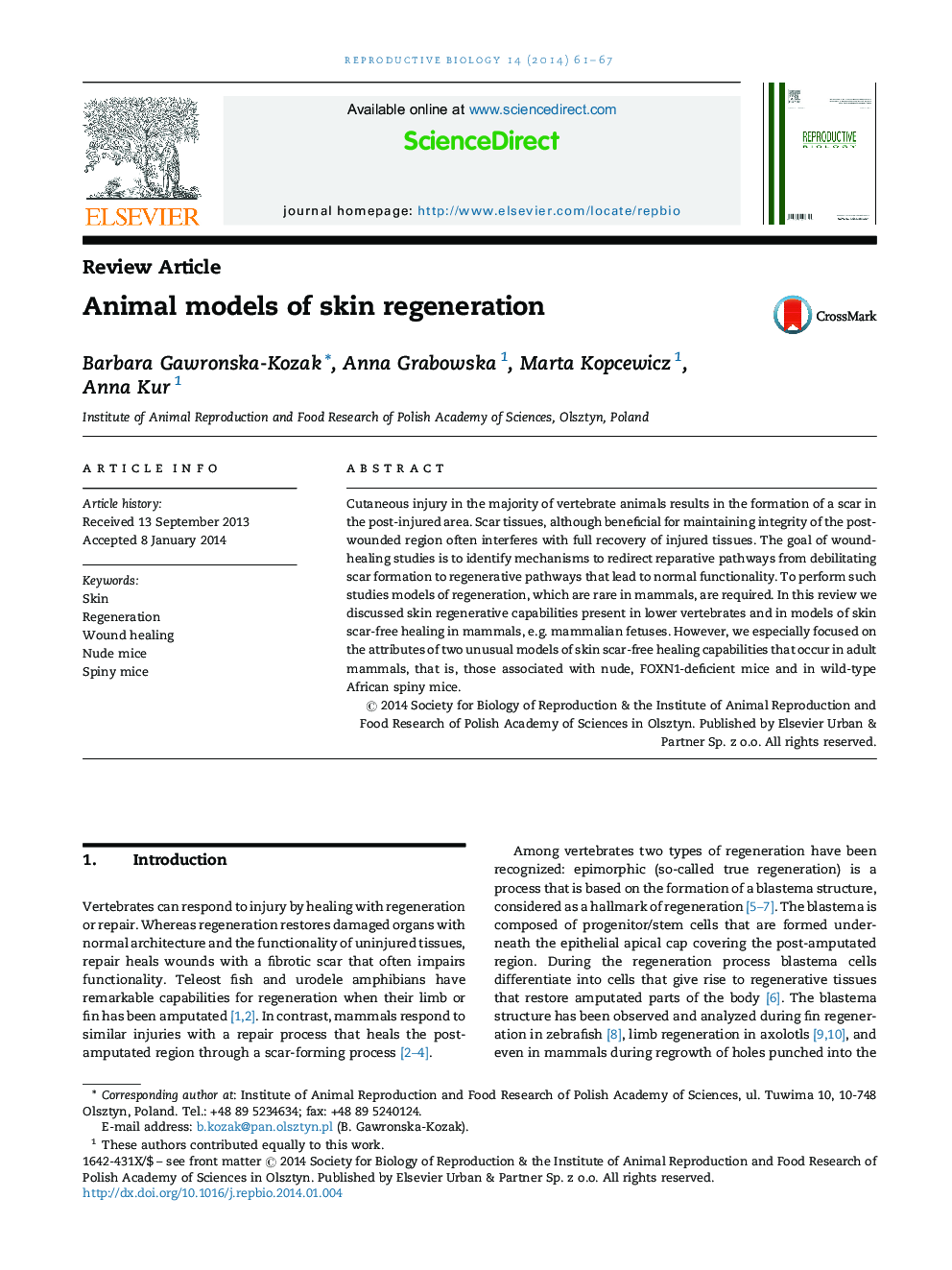| Article ID | Journal | Published Year | Pages | File Type |
|---|---|---|---|---|
| 2062499 | Reproductive Biology | 2014 | 7 Pages |
Cutaneous injury in the majority of vertebrate animals results in the formation of a scar in the post-injured area. Scar tissues, although beneficial for maintaining integrity of the post-wounded region often interferes with full recovery of injured tissues. The goal of wound-healing studies is to identify mechanisms to redirect reparative pathways from debilitating scar formation to regenerative pathways that lead to normal functionality. To perform such studies models of regeneration, which are rare in mammals, are required. In this review we discussed skin regenerative capabilities present in lower vertebrates and in models of skin scar-free healing in mammals, e.g. mammalian fetuses. However, we especially focused on the attributes of two unusual models of skin scar-free healing capabilities that occur in adult mammals, that is, those associated with nude, FOXN1-deficient mice and in wild-type African spiny mice.
